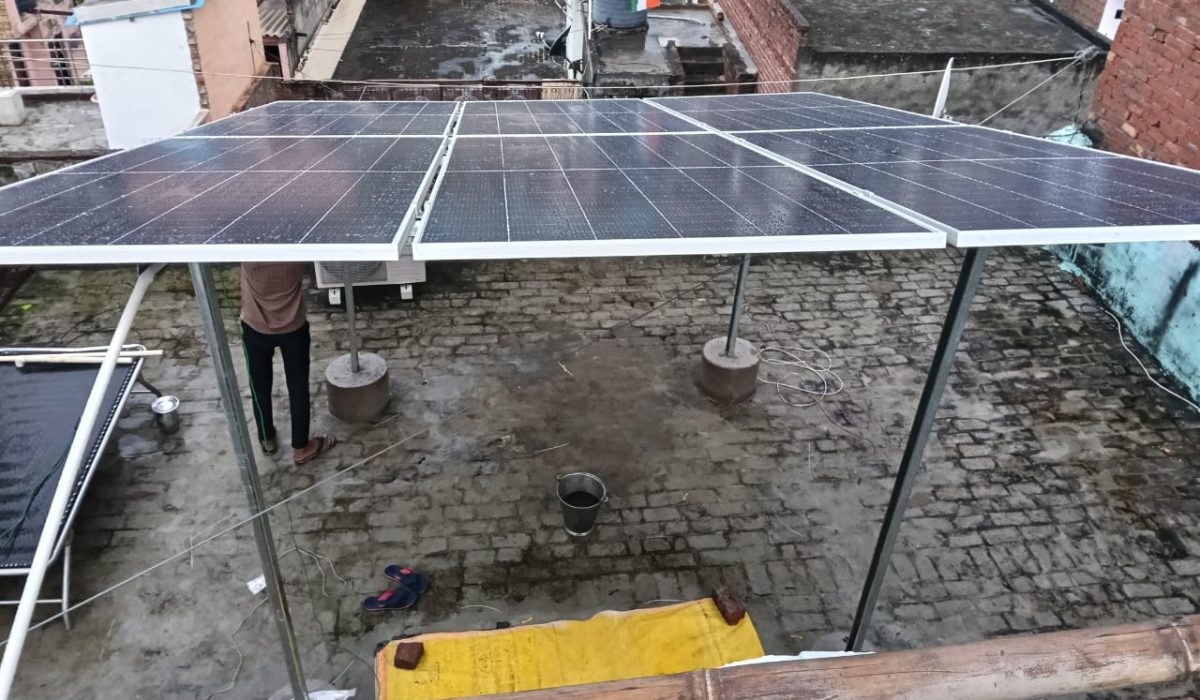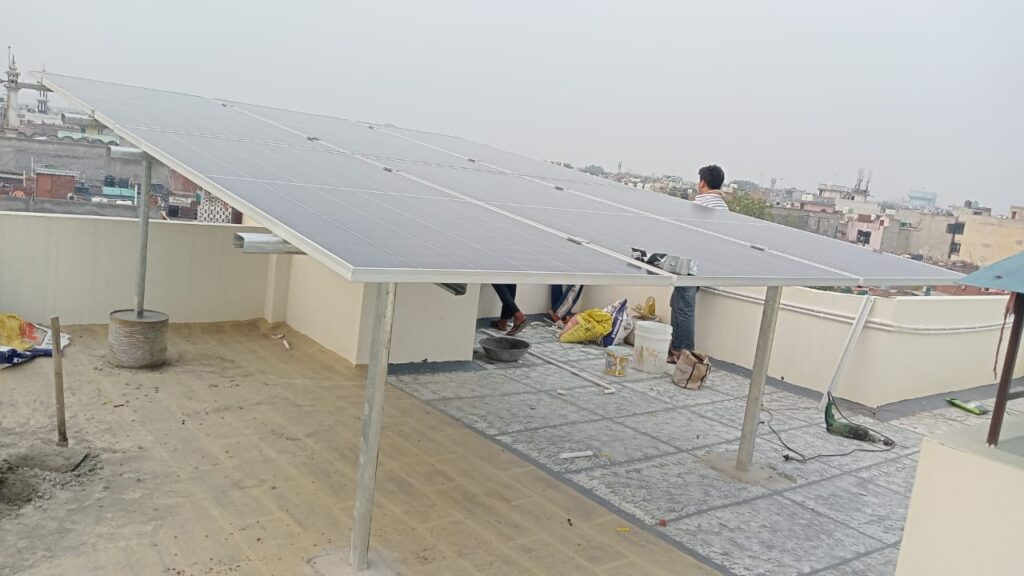
- Uttar Pradesh (UP) has set an ambitious target for rooftop solar under the PM Surya Ghar Muft Bijli (PMSG) scheme.
- Across many districts in UP however, inflated or incorrect bills are the biggest complaints of people who have installed solar rooftop plants. Consumers are also frustrated by the low electricity output.
- There are key challenges, including delays in state subsidies and net meter configuration, substandard equipment, financing, and irregular power supply, to tackle.
When Vijay Sharma of Ghaziabad, Uttar Pradesh, installed a three-kilowatt (kW) solar rooftop plant on the terrace of his two-storey house last year, he expected his electricity bills to decrease and his power generation to meet his domestic needs. Initially, he received a minimal electricity bill, but in July he was shocked to get a bill of ₹12,269 for three months, much higher than what he had anticipated. “Earlier, I used to get a bill of about ₹700-800 per month. Now, despite the same load, I don’t understand how my bill has increased,” he said.
He is not alone. In the Sarnath town of Varanasi. Brijesh Modanwal installed a five-kW solar plant in April 2025, hoping for minimal bills. By July 7, he was shocked to receive a bill of ₹22,295 for three months. Similar complaints of inflated bills are emerging from across the state.
These consumer experiences highlight the gap between expectations and reality under the PM Surya Ghar: Muft Bijli Yojana (PMSG: MBY), launched in February 2024 with the aim of promoting rooftop solar in the country. While Uttar Pradesh has set ambitious targets and ranks one among the top three nationally in the project’s rollout, many districts are struggling to meet their goals, even as consumers grapple with inflated bills and other challenges.

The rooftop solar plant at Vijay Sharma’s house in Ghaziabad. He received an unexpectedly high electricity bill in July.
Big push, uneven results
According to data from the Uttar Pradesh New and Renewable Energy Development Agency (UPNEDA), the state has set a target to install 2,65,211 residential rooftop solar plants by March 2026. Each of the 75 districts has its own target based on infrastructure and capacity.
As of July 15, however, only few districts are on track while most others are trailing. The top 15 districts include 10 municipal corporations that the state aims to develop as ‘solar cities.’ The state has drafted a policy to develop all 17 municipal corporations of Uttar Pradesh as ‘Solar Cities’. However, only 10 of those 17 municipal corporations rank among the 15 top-performing districts in implementing the PMSG: MBY.
Lucknow leads with 37,383 installations, almost double its target of 18,962 for this year. Varanasi, Prime Minister Narendra Modi’s constituency, also surpassed its annual target, with 15,548 installations against a target of 14,657. Kanpur Nagar has also performed strongly, installing 10,368 plants against a target of 4,000.
But in contrast, several key districts, including Agra, Bareilly, Prayagraj, Meerut, Muzaffarnagar, Gorakhpur, Ghaziabad, and Unnao, are falling short, and some may miss their overall targets by 2026. This is the status of the top 15 districts in terms of PMSG: MBY.
Despite this uneven progress, UPNEDA Director Inderjit Singh remains confident. “We have time till March 31, 2026, and all districts will achieve their targets by then,” he said.

Resistance From Rural Consumers
Vendors say adoption is especially slow in rural areas, where convincing people to install rooftop systems is difficult. Ajit Mishra, a Varanasi-based vendor of solar power plants explained that since these plants generate power only when electricity is present and several rural areas still lack a continuous electricity supply, convincing rural customers to install them is a major problem.
Financing is another major hurdle. Mishra said that many loan applications get stuck because of mismatches between the names in the electricity department records and the Aadhaar cards. “There are umpteen cases where names of consumers available with the electricity department are different from their actual names. Banks process loan applications only if the consumers’ names correspond to details in their Aadhaar cards, and the electricity department takes a long time to process name corrections. In many cases, consumers’ details have not been updated in the electricity department’s database after a customer’s death. These corrections too take time,” Mishra said said. As a result, several applications are pending. For instance, 192 loan applications given to banks by our company are pending in Varanasi — 70 in Bhadohi, 23 in Mirzapur, and 92 in Jaunpur.
Vendors also face resistance from consumers who fear higher bills. “In rural areas, many customers are not even accustomed to paying bills regularly. Also, where there is no need for an air conditioner (AC), consumers don’t feel the need to install a solar plant. In fact, installing solar rooftops may result in higher electricity bills if the smart meters are not configured to calculate the power units generated and consumed,” Mishra said.
However, Saraswat remains hopeful. “Any scheme of this stature will take time for implementation. There are key issues that need to be ironed out. All these issues have been communicated to the stakeholders, and district-level committees are in place to address them. Once we reach equilibrium, these will be ironed out, but we need to create awareness among consumers,” he said.

